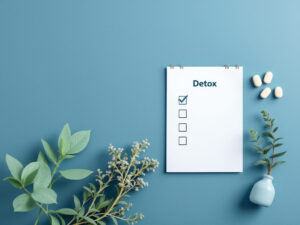Embarking on a detox from fentanyl Scottsdale residents trust specialized medical centers to guide them safely through withdrawal. If you’re looking for detox from fentanyl Scottsdale, you’ll find tailored programs that combine medical supervision, evidence-based therapies, and holistic support in a comfortable setting. This guide walks you through understanding dependence, evaluating your options, preparing for detox, and planning your recovery journey step by step.
By the end, you’ll know how to choose the right facility, navigate each stage of withdrawal, and arrange aftercare to support lasting sobriety. Whether you need 24/7 medical oversight or a luxury detox experience, Scottsdale offers a range of services to meet your needs.
Understand fentanyl dependence
What is fentanyl?
Fentanyl is a synthetic opioid up to 100 times stronger than morphine, used medically for severe pain management. Illegally manufactured versions have driven a surge in overdose deaths, making fentanyl a leading cause of opioid-related fatalities [1].
Risk of fentanyl use
- Intense euphoria and relaxation
- Rapid tolerance and physical dependence
- High overdose potential due to potency
- Risk of respiratory depression and hypoxia
Recognize withdrawal symptoms
Fentanyl withdrawal can be physically and emotionally overwhelming. Common symptoms include:
- Flu-like discomfort, muscle aches, sweating [2]
- Restlessness, insomnia, anxiety
- Gastrointestinal distress and nausea
- Severe cravings and emotional instability
- Post-acute withdrawal syndrome (PAWS): mood swings and anxiety lasting weeks to months [3]
Detox from fentanyl scottsdale options
Inpatient medical detox
Inpatient programs provide a controlled environment where you live on-site and receive:
- 24/7 medical supervision and vital-sign monitoring
- Medication-assisted treatment to ease withdrawal
- Daily nursing care and psychiatric support
- Private rooms for comfort and privacy
Consider a full medical detox Scottsdale or private medical detox Scottsdale for maximum discretion.
Outpatient taper programs
If you have stable living conditions and strong support at home, an outpatient approach may suit you:
- Gradual buprenorphine microdosing (low-dose initiation) to avoid precipitated withdrawal [4]
- Scheduled clinic visits for medication adjustments
- Access to counseling and group therapy
Explore opioid detox Scottsdale for outpatient options in your area.
Luxury detox experiences
For added comfort and privacy, luxury centers in Scottsdale offer:
- Upscale estate settings with spacious accommodations
- Personalized attention from intake coordinators in recovery
- Gourmet meals, fitness facilities, and spa services
- Family visitation suites and hospitality staff
Learn more about luxury detox Scottsdale and scottsdale drug detox center.
Prepare for medical detox
Evaluate your health status
Before admission, you’ll undergo:
- Comprehensive physical exam and blood work
- Assessment of co-occurring mental health conditions
- Review of your substance use history (including alcohol, benzodiazepines, prescription drugs)
Disclose all medications to ensure a safe plan—see options for alcohol detox Scottsdale AZ and benzodiazepine detox Scottsdale.
Review your options
Compare programs based on:
- Level of medical supervision [5]
- Staff credentials and accreditation
- Amenities and privacy features
- Cost and insurance acceptance [6]
Set personal goals
Identify what you want to achieve during detox:
- Safety and comfort through withdrawal
- Stabilization of physical and mental health
- Connection to ongoing treatment resources
- Establishment of a relapse-prevention foundation
Plan your Scottsdale journey
Choose a local center
Factors to consider:
- Location and campus environment
- 24/7 medical and psychiatric staff
- Evidence-based therapies and holistic treatments
- Accreditation by state and national bodies
Browse reputable options at detox center Scottsdale AZ.
Verify insurance coverage
- Confirm in-network providers and covered services
- Contact AHCCCS Member Services for state programs [7]
- Ask about sliding-scale fees or financial aid
- Check coverage for Medication-Assisted Treatment under the MAT Act provision [8]
Arrange transportation and lodging
- On-site housing may be included for inpatient stays
- Nearby hotels for family or extended stays
- Shuttle or ride-share options from Phoenix Sky Harbor Airport
- Plan for at least 7–14 days of uninterrupted residence
Navigate detox process safely
Initial medical evaluation
Upon arrival, you’ll meet with:
- Medical director for dose planning
- Psychiatrist or counselor for mental-health assessment
- Nursing team for baseline vitals and labs
24/7 medical supervision
Continuous monitoring reduces risks such as dehydration or cardiac issues. Staff will:
- Track vital signs and oxygen saturation
- Administer medications for symptom relief
- Provide emotional support during high-intensity phases
Medication-assisted treatment
Medications can ease withdrawal and stabilize you:
| Medication | Starting dose | Key notes |
|---|---|---|
| Methadone | 10 mg orally every 4–6 hours | Maximum 40 mg per 24 hours, reduces cravings |
| Buprenorphine | 4–12 mg sublingual after 12–48 hrs | Delayed initiation prevents precipitated withdrawal [8] |
| Lofexidine | 0.18 mg tablets up to 14 days | Non-opioid option for acute withdrawal |
Holistic support services
To complement medical care, many centers include:
- Individual and group therapy (CBT, EMDR, trauma therapy)
- Nutritional counseling and fitness guidance
- Mindfulness, yoga, and meditation sessions
- Equine therapy or art therapy for emotional release
Manage withdrawal stages
| Stage | Timeframe | Common symptoms | Support strategies |
|---|---|---|---|
| Early and peak withdrawal | 6–72 hours | Nausea, muscle pain, sweating, insomnia | Medication-assisted relief, hydration |
| Subsiding withdrawal | 4–7 days | Reduced intensity, irritability, fatigue | Ongoing counseling, group support |
| Post-acute withdrawal | Weeks to months | Mood swings, anxiety, cravings (PAWS) | Aftercare planning, relapse prevention tools |
Monitoring each phase helps you and your care team adjust interventions for comfort and safety.
Engage in aftercare planning
Transition to rehab programs
Detox is the first step. Consider:
- Residential inpatient treatment for deeper therapy
- Intensive outpatient programs (IOP) for daily support
- Sober living homes for structured environments
Connect with support services
- Peer recovery coaches and alumni networks
- 12-step fellowships (NA, SMART Recovery)
- Family education and counseling sessions
Develop relapse prevention
Work with your team to:
- Identify triggers and high-risk situations
- Practice coping strategies and stress management
- Establish a support circle and crisis plan
Take the first step
Contact an intake coordinator
Reach out to a Scottsdale center to discuss your history and needs. Intake coordinators—often in recovery themselves—will guide you through paperwork, insurance verification, and scheduling.
What to expect next
- Phone or virtual assessment within 24 hours
- Pre-admission medical review and clearances
- Scheduled admission date with arrival instructions
- Initial orientation to the facility and care team
Resources for families
Arizona residents can call for help and referrals:
- Mercy Care Member Services: regional hotlines at AHCCCS
- Arizona Complete Health Customer Service: regional contacts listed on AHCCCS
By following these steps—understanding your dependence, exploring detox options, planning logistics, and engaging in aftercare—you can start a safe, supportive journey toward lasting recovery in Scottsdale. Take action today and reach out for the medical detox support you deserve.







